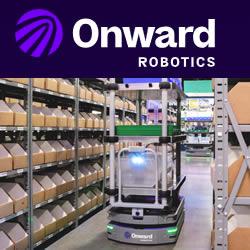Indoor Tracking Technologies in Robots & Drones
This thought experiment shows why robot localization, the task of maintaining a location position as robots move around, and obstacle avoidance, is so critical to the success of all non-stationary robots.
DIY Position Tracking Using HTC Vive's Lighthouse
From Alexander Shtuchkin:
Code & schematics for position tracking sensor using HTC Vive's Lighthouse system and a Teensy board.
General purpose indoor positioning sensor, good for robots, drones, etc.
3d position accuracy: currently ~10mm; less than 2mm possible with additional work.
Update frequency: 30 Hz
Output formats: Text; Mavlink ATT_POS_MOCAP via serial; Ublox GPS emulation (in works)
HTC Vive Station visibility requirements: full top hemisphere from sensor. Both stations need to be visible.
Positioning volume: same as HTC Vive, approx up to 4x4x3 meters.
Cost: ~$10 + Teensy 3.2 ($20) (+ Lighthouse stations (2x $135))
Skills to build: Low complexity soldering; Embedded C++ recommended for integration to your project.
(Github page)
Records 1 to 2 of 2
Featured Product

Onward Robotics - Meet Me Fulfillment Automation
Meet Me uniquely brings talent and technology together: providing end-to-end process efficiency and enabling accurate and continuous fulfillment workflows. Proprietary Pyxis technology uniquely orchestrates picker and Lumabot AMR workflows independently, delivering fast, accurate, and efficient fulfillment from induction to pack out. Learn more about Meet Me Automation: Download Overview Brochure
Robotics and Automation - Featured Company

Onward Robotics
Onward Robotics delivers innovative automation technology that coordinates humans and robots as a cohesive system to revolutionize fulfillment. Our Meet Me® solution combines proprietary software with person-to-goods mobile robots to increase efficiency in warehousing, distribution, and e-commerce operations. Onward Robotics provides the boost in productivity, flexibility, and speed that companies need to remain competitive and grow.

